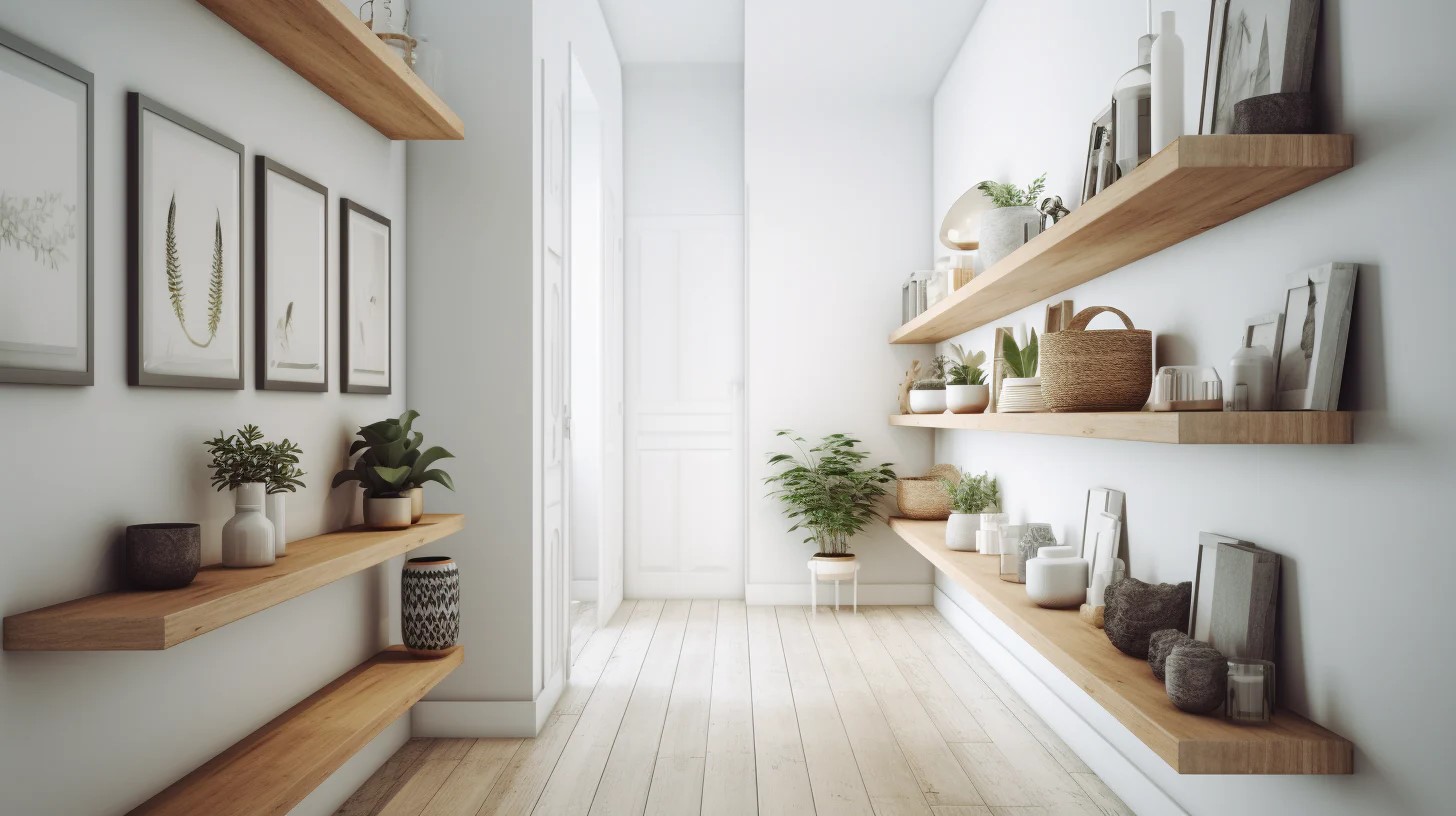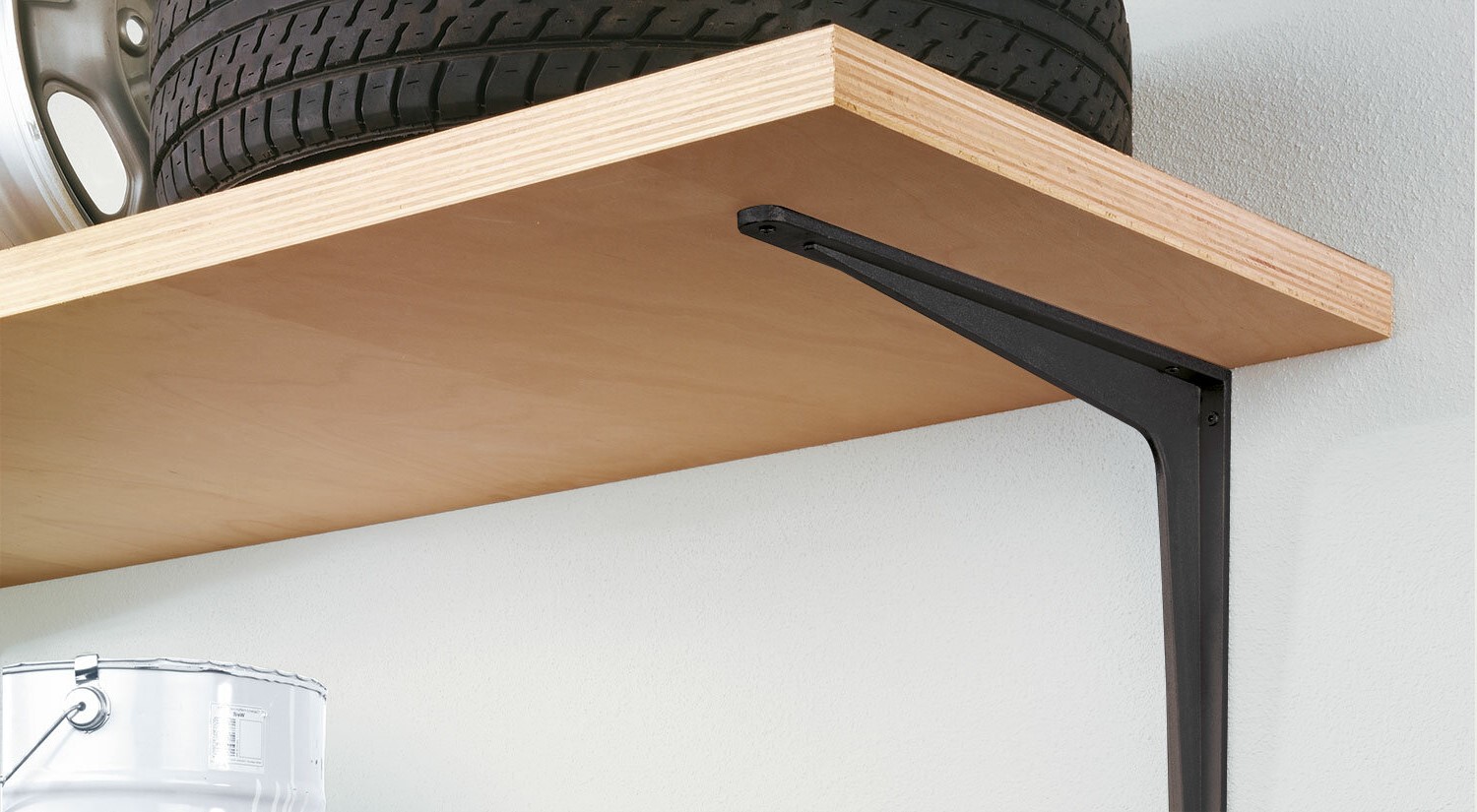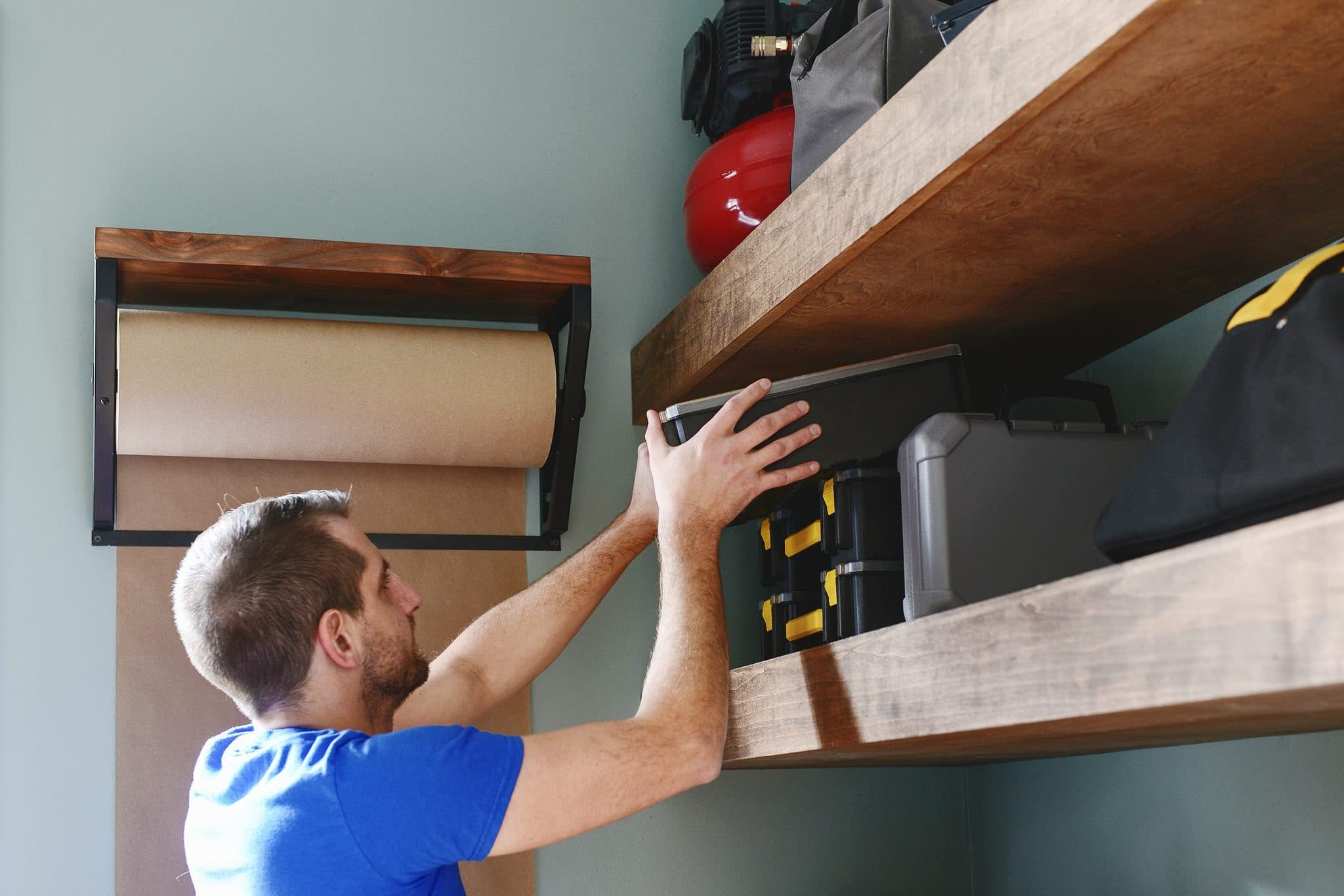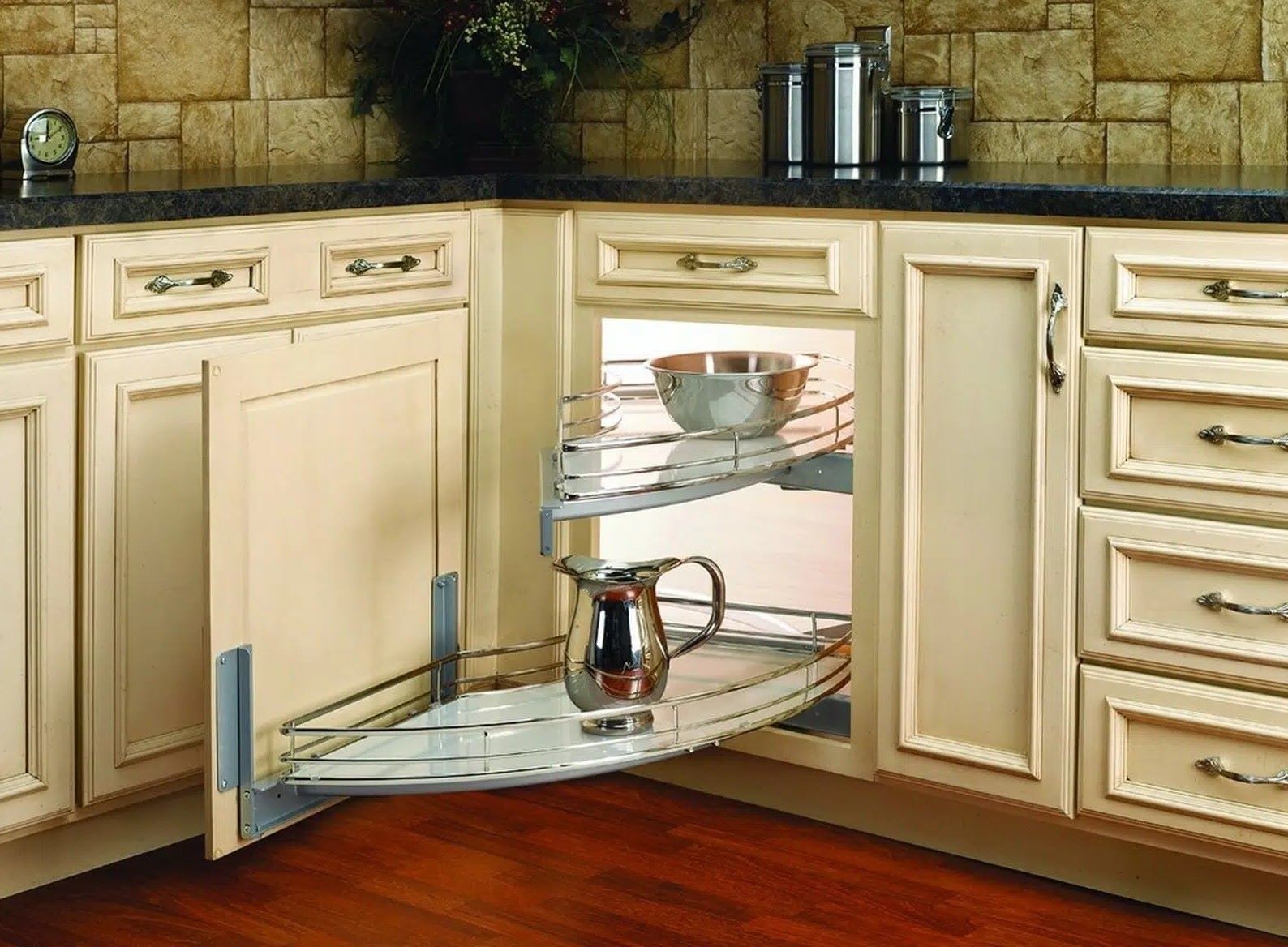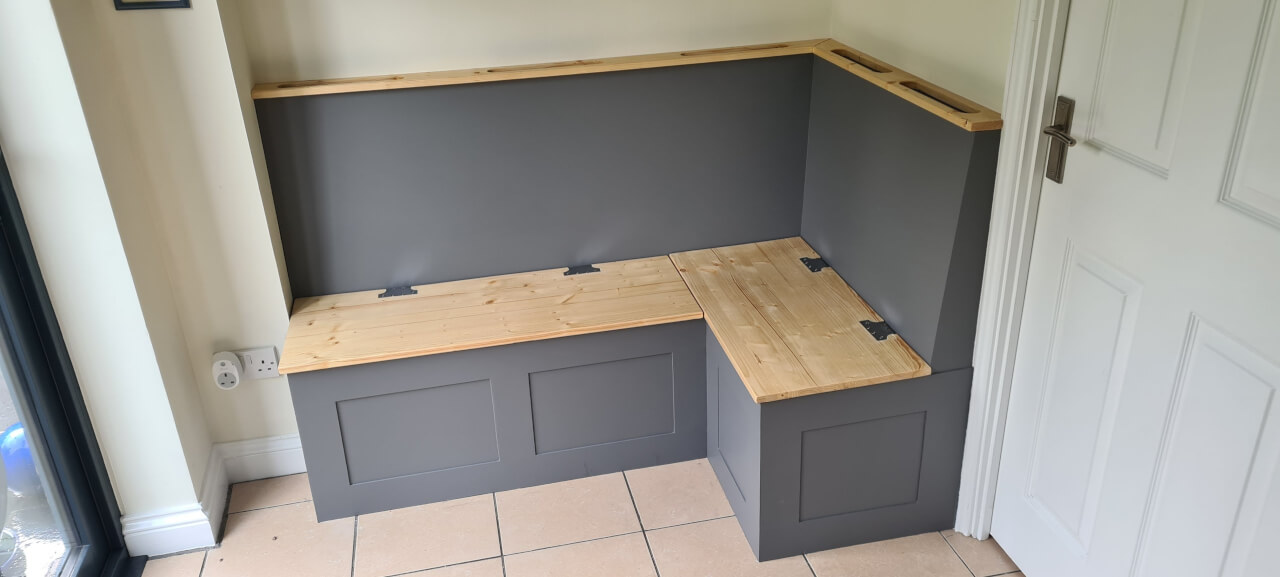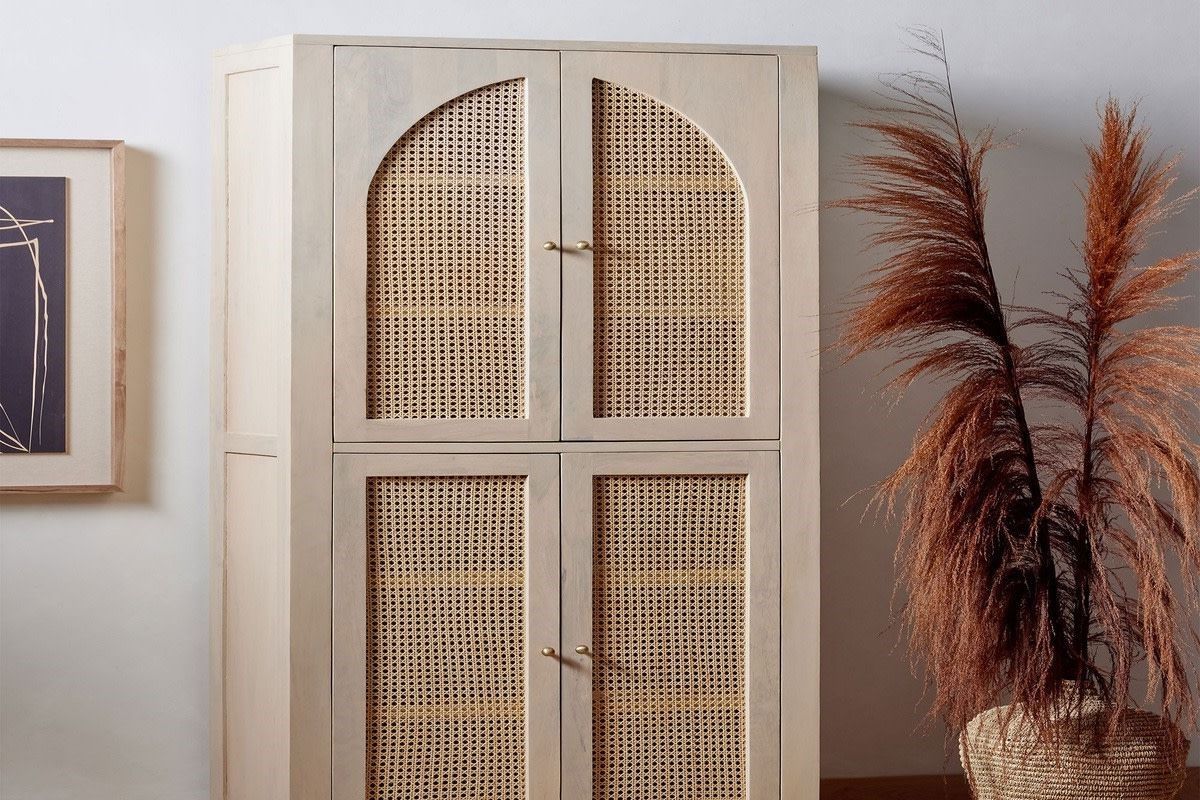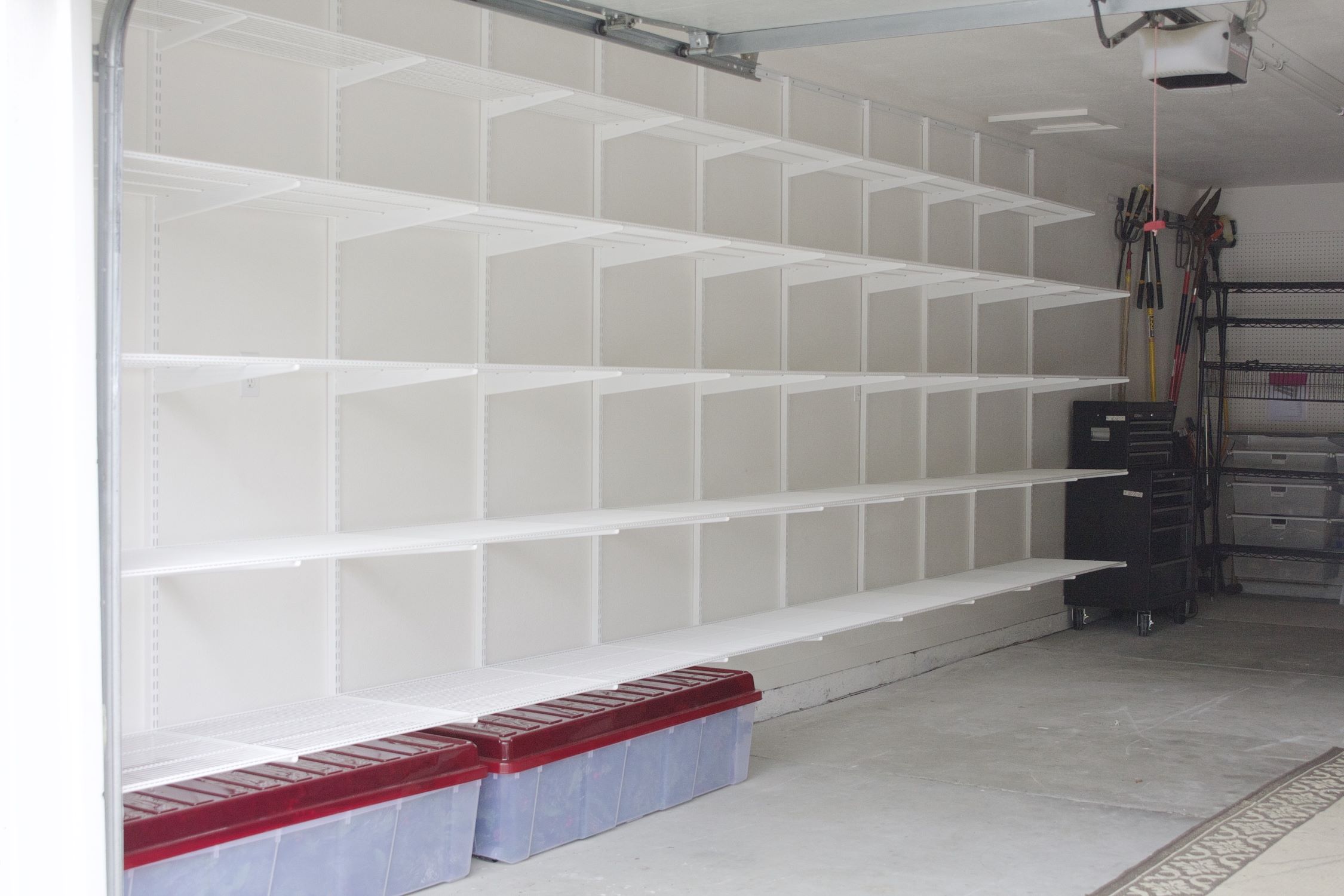Home>Create & Decorate>DIY & Crafts>How To Build Corner Shelves
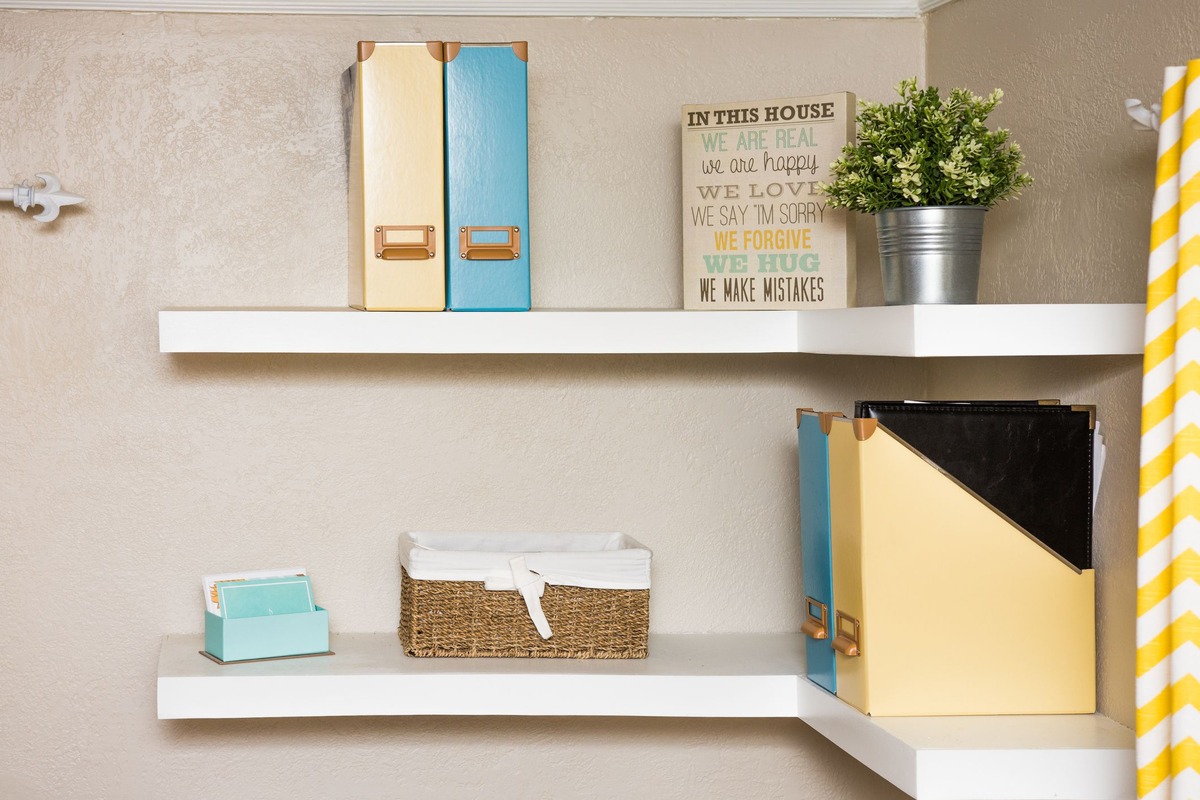

DIY & Crafts
How To Build Corner Shelves
Published: February 28, 2024

Content Creator specializing in woodworking and interior transformations. Caegan's guides motivate readers to undertake their own projects, while his custom furniture adds a personal touch.
Learn how to create stylish and functional corner shelves with our easy DIY & Crafts guide. Transform your space today!
(Many of the links in this article redirect to a specific reviewed product. Your purchase of these products through affiliate links helps to generate commission for Twigandthistle.com, at no extra cost. Learn more)
Introduction
Are you looking to add a touch of elegance and functionality to a corner of your home? Building corner shelves can be a rewarding and practical DIY project that not only maximizes space but also enhances the aesthetic appeal of any room. Whether you're a seasoned DIY enthusiast or a novice looking to embark on your first woodworking venture, creating corner shelves is a fantastic way to unleash your creativity and showcase your craftsmanship.
By crafting your own corner shelves, you have the freedom to customize the design, dimensions, and finish to perfectly complement your existing decor. From displaying cherished mementos and potted plants to organizing books and showcasing artwork, these shelves offer endless possibilities for both storage and decoration. Additionally, building corner shelves allows you to make the most of underutilized space, transforming neglected corners into focal points that exude charm and practicality.
In this comprehensive guide, we will walk you through the step-by-step process of constructing and installing corner shelves. From gathering the necessary materials and tools to measuring, cutting, and assembling the shelves, we'll cover everything you need to know to bring your vision to life. Whether you're aiming for a rustic, industrial, or modern look, the versatility of this project enables you to tailor the shelves to suit your personal style and preferences.
Embarking on this DIY journey will not only result in beautiful and functional corner shelves but also provide a sense of accomplishment and pride as you witness your creation come to fruition. So, roll up your sleeves, unleash your creativity, and let's dive into the exciting world of building corner shelves!
Read more: DIY Garage Corner Shelves Guide
Materials and Tools Needed
Before diving into the construction of corner shelves, it's essential to gather the necessary materials and tools to ensure a smooth and efficient building process. Here's a comprehensive list of items you'll need to bring your project to life:
Materials:
- Wood: Select high-quality wood that aligns with your aesthetic preferences and complements the existing decor. Common options include pine, oak, or plywood, depending on the desired look and budget.
- Wood Screws: Choose screws of appropriate length and thickness to securely fasten the shelves and support brackets.
- Wood Glue: Opt for a strong, durable wood glue to reinforce the joints and enhance the overall stability of the shelves.
- Wood Filler: This will come in handy for filling any gaps or imperfections in the wood, ensuring a smooth and polished final appearance.
- Finishing Nails: These will be used for attaching the shelves to the support brackets, providing additional reinforcement.
Tools:
- Measuring Tape: Accurate measurements are crucial for achieving precise cuts and ensuring the shelves fit snugly into the corner space.
- Circular Saw or Miter Saw: A reliable saw will be essential for cutting the wood to the desired dimensions, allowing for clean and precise edges.
- Drill and Drill Bits: A drill is necessary for creating pilot holes and driving screws into the wood, while a variety of drill bits will accommodate different screw sizes.
- Screwdriver: Both manual and electric screwdrivers can be used for assembling the shelves and attaching the support brackets.
- Level: To guarantee that the shelves are installed evenly and securely, a level will help maintain balance and symmetry.
- Sandpaper or Sander: Smooth out rough edges and surfaces with sandpaper or a sander to achieve a professional finish.
- Paintbrushes or Stain Applicators: If you plan to paint or stain the shelves, having the appropriate brushes or applicators on hand is essential for a flawless application.
By ensuring that you have all the necessary materials and tools at your disposal, you'll be well-prepared to embark on the exciting journey of building your own corner shelves. With these foundational elements in place, you can proceed to the next steps of planning, measuring, and bringing your vision to life.
Planning and Measuring
Before diving into the physical construction of your corner shelves, meticulous planning and precise measurements are crucial to ensure a successful and visually appealing outcome. This phase sets the foundation for the entire project, guiding the selection of materials and informing the cutting and assembly processes. Here's a detailed breakdown of the essential steps involved in planning and measuring for your corner shelves:
-
Assess the Space: Begin by evaluating the corner where the shelves will be installed. Take note of any architectural features, such as baseboards or molding, that may impact the design and placement of the shelves. Understanding the dimensions and characteristics of the space will inform the overall layout and configuration of the shelves.
-
Determine Shelf Dimensions: Consider the intended use of the shelves and the items they will hold. Whether you plan to display decorative items, books, or electronic devices, determining the ideal dimensions for each shelf is crucial. Take into account the height, width, and depth of the shelves to ensure they accommodate your specific storage and display needs.
-
Create a Detailed Plan: Sketch out a rough design or create a digital mock-up of the corner shelves, incorporating the chosen dimensions and overall aesthetic. This visual representation will serve as a guide throughout the construction process, helping you stay on track and visualize the final product.
-
Measure Accurately: Utilize a reliable measuring tape to take precise measurements of the corner space and determine the exact dimensions for each shelf. Double-check all measurements to avoid errors that could lead to ill-fitting or misaligned shelves during assembly.
-
Account for Support Brackets: If your design includes support brackets, factor in their dimensions and placement during the planning phase. Determine the optimal positioning of the brackets to ensure adequate support for the shelves while maintaining a visually pleasing arrangement.
-
Consider Aesthetic Details: While planning the shelves, consider the overall aesthetic you wish to achieve. Whether you prefer a minimalist, industrial, or rustic look, envision how the shelves will complement the existing decor and contribute to the ambiance of the room.
By meticulously planning and measuring every aspect of the corner shelves, you'll lay the groundwork for a seamless and gratifying construction process. This preparatory phase not only ensures that the shelves fit flawlessly into the designated space but also allows for the integration of personalized design elements that reflect your unique style and preferences. With the planning and measuring stage completed, you're ready to move on to the next exciting phase of cutting and sanding the wood to bring your vision to life.
Read more: How To Build A Corner Closet
Cutting and Sanding
With the meticulous planning and precise measurements in place, the next crucial phase in building your corner shelves involves cutting the wood to the specified dimensions and refining the surfaces through sanding. This stage is where raw materials begin to take shape, and the transformation from lumber to polished shelves begins. Here's a detailed breakdown of the essential steps involved in cutting and sanding the wood for your corner shelves:
Cutting the Wood
Using the measurements and dimensions determined during the planning phase, carefully mark the wood according to the desired lengths and widths for each shelf. Whether using a circular saw or miter saw, ensure that the cutting process is executed with precision to achieve clean, straight edges. Take your time to follow the marked lines accurately, as precise cuts are essential for the shelves to fit seamlessly into the corner space.
As you progress through the cutting process, pay attention to safety measures, such as wearing protective eyewear and ensuring a stable work surface. Additionally, it's advisable to use a sharp saw blade to facilitate smooth and efficient cuts, reducing the likelihood of splintering or jagged edges.
Sanding the Surfaces
Once the wood has been cut to the specified dimensions, the next step is to refine the surfaces through sanding. Begin by smoothing out any rough edges and surfaces using medium-grit sandpaper, gradually progressing to finer grits for a polished finish. Pay particular attention to the corners and edges, ensuring that they are rounded and free of any sharpness.
In addition to refining the edges, sanding the entire surface of the wood is essential for achieving a professional and uniform appearance. This process not only enhances the tactile quality of the shelves but also prepares the wood for the application of finishes, such as paint or stain, if desired.
Throughout the sanding process, periodically inspect the wood to identify any imperfections or rough patches that require further attention. By meticulously sanding the surfaces, you'll achieve a refined and inviting texture that enhances the overall visual appeal of the shelves.
By meticulously executing the cutting and sanding processes, you'll witness the raw materials evolve into precisely sized components with smooth, polished surfaces. With these foundational elements prepared, you're now ready to proceed to the exciting phase of assembling the shelves, bringing you one step closer to the completion of your custom-built corner shelves.
Assembling the Shelves
Assembling the shelves marks a pivotal stage in the construction process, where individual components come together to form a cohesive and functional structure. This phase requires precision and attention to detail to ensure that the shelves are sturdy, well-aligned, and ready for installation. Here's a comprehensive guide to the essential steps involved in assembling the corner shelves:
Attaching Support Brackets
If your design incorporates support brackets, begin by positioning them at the predetermined locations within the corner space. Using a level to maintain accuracy, secure the brackets to the wall using appropriate screws and anchors, ensuring that they are firmly anchored and capable of bearing the weight of the shelves.
Attaching Shelf Components
With the support brackets in place, it's time to attach the individual shelf components to create the complete shelving unit. Apply a thin, even layer of high-quality wood glue to the edges of the shelves that will come into contact with the support brackets. Carefully position each shelf onto the brackets, ensuring a snug fit and uniform alignment.
Reinforcing with Screws and Nails
To reinforce the connection between the shelves and support brackets, drive wood screws through the brackets into the underside of each shelf. Additionally, secure the shelves to the brackets using finishing nails, ensuring that they are driven in flush with the surface to maintain a seamless appearance.
Checking Stability and Alignment
Once the shelves are assembled and secured to the support brackets, it's crucial to assess their stability and alignment. Use a level to ensure that the shelves are perfectly horizontal and free of any tilting or unevenness. Test the sturdiness of the shelves by applying gentle pressure and verifying that they can support the intended items without wobbling or shifting.
Read more: How to Build a DIY Blind Corner Cabinet
Applying Finishing Touches
After confirming the stability and alignment of the assembled shelves, take the opportunity to address any remaining imperfections or rough edges. Use wood filler to fill in any gaps or blemishes, creating a smooth and flawless surface. Additionally, lightly sand the visible surfaces to achieve a refined finish that is ready for the application of paint, stain, or sealant, if desired.
By meticulously following these steps, you'll successfully assemble the corner shelves, culminating in a structurally sound and visually appealing shelving unit. With the assembly phase completed, the next exciting step involves mounting the shelves in their designated corner space, bringing your custom-built creation to its final destination.
Mounting the Shelves
With the corner shelves meticulously assembled, the next crucial step is mounting them in their designated corner space. Proper installation is essential to ensure stability, functionality, and visual harmony within the room. Here's a detailed guide to the process of mounting the shelves:
Positioning the Shelves
Begin by carefully positioning the assembled shelves within the corner space, ensuring that they align seamlessly with the support brackets. Use a measuring tape to verify that the shelves are equidistant from the adjacent walls, maintaining a balanced and symmetrical appearance. This initial alignment is crucial for achieving a polished and professional installation.
Securing the Shelves
Once the shelves are positioned correctly, secure them to the support brackets using wood screws or appropriate fasteners. Ensure that the screws are driven through the underside of the shelves into the support brackets, creating a strong and reliable connection. It's advisable to pre-drill pilot holes to prevent the wood from splitting and to facilitate precise screw placement.
Read more: How to Build a DIY Corner Vanity
Verifying Stability
After securing the shelves, it's essential to verify their stability and load-bearing capacity. Apply gentle pressure to the shelves to confirm that they can support the intended items without any signs of wobbling or instability. Additionally, use a level to ensure that the shelves are perfectly horizontal, contributing to a visually pleasing and functional installation.
Concealing Mounting Hardware
To achieve a clean and polished aesthetic, consider concealing the mounting hardware for a seamless appearance. Depending on the design and material of the shelves, there are various methods to discreetly hide the screws or fasteners, such as using wood plugs, decorative caps, or strategically placed accessories. This attention to detail enhances the overall visual appeal of the mounted shelves.
Final Adjustments
Once the shelves are securely mounted, take a moment to make any final adjustments to ensure that they are perfectly aligned and level. This may involve minor repositioning or tightening of the mounting hardware to achieve an impeccable installation. Attention to these details contributes to a professional and visually pleasing outcome.
By meticulously following these steps, you'll successfully mount the corner shelves, transforming the once-empty corner into a functional and visually captivating space. With the shelves securely in place, you're one step closer to enjoying the practicality and aesthetic charm they bring to your living space.
Finishing Touches
With the structural aspects of the corner shelves in place, attention turns to the crucial phase of adding the finishing touches. This stage is where the shelves truly come to life, as the application of finishes and attention to detail elevate them from functional components to visually stunning features within the room.
Read more: How to Build a Walk-In Closet
Sanding and Smoothing
Before applying any finishes, it's essential to conduct a final round of sanding to ensure that the surfaces of the shelves are impeccably smooth. Using fine-grit sandpaper, gently sand the entire visible surface of the wood, paying particular attention to any remaining imperfections or rough spots. This meticulous sanding process not only enhances the tactile quality of the shelves but also sets the stage for a flawless finish application.
Staining or Painting
The choice between staining and painting the shelves is a pivotal decision that significantly influences their final appearance. Staining the wood allows its natural grain and texture to shine through, imparting a warm and organic aesthetic. On the other hand, painting the shelves provides an opportunity to introduce bold or subtle colors that complement the room's decor and create a striking visual impact.
When applying stain or paint, ensure that the surfaces are clean and free of any dust or debris. Use high-quality brushes or applicators to achieve smooth and even coverage, allowing the natural beauty of the wood or the chosen paint color to emerge. Multiple thin coats may be necessary to achieve the desired depth of color and finish, with careful attention to drying times between applications.
Sealing and Protecting
To preserve the beauty and integrity of the shelves, it's essential to apply a protective sealant or topcoat. Whether using a clear polyurethane varnish, lacquer, or wax, the sealant serves to safeguard the wood from moisture, stains, and daily wear and tear. Additionally, the sealant enhances the sheen and durability of the finish, ensuring that the shelves maintain their luster for years to come.
Adding Decorative Accents
To infuse the shelves with a personalized touch, consider incorporating decorative accents that complement the overall aesthetic of the room. This could involve attaching ornamental trim, decorative brackets, or subtle embellishments that accentuate the visual appeal of the shelves. These thoughtful details contribute to a cohesive and harmonious integration of the shelves within the room's decor.
By meticulously attending to these finishing touches, the corner shelves are transformed into captivating focal points that seamlessly blend functionality with aesthetic allure. The careful application of finishes, protective sealants, and personalized accents culminates in the creation of custom-built corner shelves that not only serve a practical purpose but also elevate the visual appeal of the surrounding space.
Read more: How to Build Adjustable Garage Shelving
Conclusion
In conclusion, the journey of building custom corner shelves is a testament to the fusion of creativity, craftsmanship, and practicality. From the initial stages of planning and measuring to the final touches of applying finishes and decorative accents, every step in the construction process contributes to the transformation of raw materials into functional and visually captivating shelving units.
The process of building corner shelves transcends mere woodworking; it embodies the opportunity to breathe life into neglected corners, maximizing space and adding a touch of elegance to any room. The versatility of this DIY project allows individuals to tailor the design, dimensions, and finishes to align with their unique style and preferences, resulting in a truly personalized creation.
By meticulously measuring, cutting, and assembling the shelves, DIY enthusiasts embark on a journey of self-expression and ingenuity, culminating in the satisfaction of witnessing their vision materialize into tangible, handcrafted pieces. The attention to detail in mounting the shelves ensures not only their stability and functionality but also their seamless integration into the existing decor, elevating the overall ambiance of the room.
The application of finishes and protective sealants serves as the final stroke of artistry, preserving the natural beauty of the wood or enhancing it with carefully chosen colors and textures. These finishing touches not only contribute to the longevity of the shelves but also reflect the creator's dedication to achieving a polished and professional outcome.
Ultimately, the completion of custom-built corner shelves represents more than the addition of storage and display space; it symbolizes the fulfillment of a creative vision and the embodiment of craftsmanship. Whether adorning a living room, bedroom, home office, or kitchen, these shelves stand as a testament to the art of DIY woodworking and the transformative power of personalized creations within the home.
As DIY enthusiasts and woodworking aficionados embark on the journey of building corner shelves, they not only enrich their living spaces but also cultivate a deep sense of accomplishment and pride in their ability to shape raw materials into functional works of art. With each completed project, the allure of DIY craftsmanship continues to inspire and empower individuals to infuse their living spaces with custom-built creations that reflect their unique style and ingenuity.


